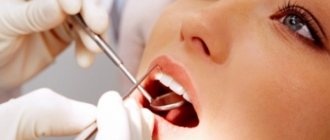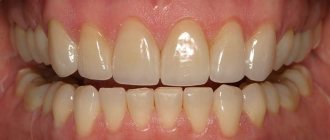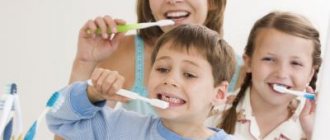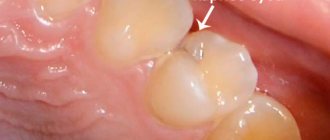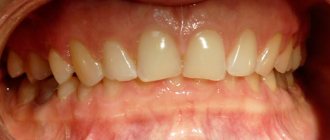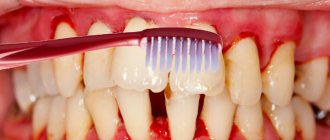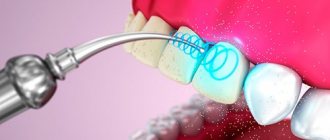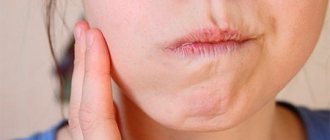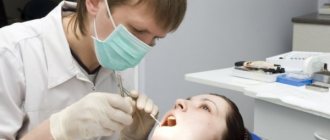How to keep your teeth healthy: choosing a hygiene product
How to keep your teeth healthy, because every day thousands of bacteria accumulate on the tongue, teeth, and gums, and not all of them create a favorable environment for the body.
Let's learn how to choose products offered by manufacturers who specialize in selling products in the field of beauty and health.
Toothpaste
Pastes are divided into two groups: therapeutic and prophylactic and hygienic. The first are designed to combat dental problems and are used for two weeks. The latter remove food particles, freshen breath, and cleanse the enamel of plaque. Suitable for people with a healthy oral cavity.
Therapeutic and prophylactic agents prevent the formation of plaque and disinfect the oral cavity. They are divided into three types.
Anti-inflammatory. These pastes contain antiseptics and extracts from medicinal plants that remove foci of inflammation and increase local immunity. Use for 2-3 weeks, after which you need to switch to a neutral paste. This is done to prevent bacteria from developing resistance to the components of the cleaning product.
Whitening. The composition includes soda, which has a cleansing effect. Pastes are not capable of completely whitening enamel, but they can lighten the surface of teeth by 1–2 shades. The products are used up to twice every seven days, since frequent use damages the enamel. Categorical ones are not suitable for sensitive teeth.
With fluoride. Such pastes are intended for people who are deficient in this element. In other cases, it is not advisable to use them, as they can cause health problems. The products are also not suitable for small children because they may accidentally swallow particles of the substance.
Family hygiene pastes are suitable for adults and children over seven years of age. But still, a child’s baby teeth require special care, so it is preferable to use special toothpastes. Such products contain harmless components and are characterized by a low degree of abrasiveness so as not to injure thin enamel.
If your teeth are sensitive, buy pastes that contain calcium or strontium chloride, hydroxyapatite, calcium nitrate, and fluoride ions.
Dentifrice
Powder bases are precipitated chalk, white clay, baking soda, sea salt, volcanic tuff, aluminum chloride. The substances consist of crushed abrasive particles that clean the surface of the teeth from plaque and stone. More often, three types of powder are found on the shelves of specialized stores and pharmacies.
Refreshing, whitening and strengthening (preventive) with additives - ginger root, nutmeg, cinnamon, mint. Products containing crushed medicinal plants are sold less frequently. In addition to the main components, the dry compositions include: red pepper, sea minerals, honey, essential oils.
Although some powder manufacturers claim that the products contain soft cleansing particles that prevent damage to the enamel, this is not the case. With prolonged use, they increase the sensitivity of teeth and still worsen the condition of hard tissues. So you can only use the powder twice every seven days. Despite some disadvantages of the product, it consists entirely of natural ingredients.
Visiting the dentist
Many people dream of having healthy teeth and a beautiful smile, while visiting the dentist as little as possible. It’s worth noting right away that regular visits to the dentist and healthy teeth are directly related things. After all, it is the dentist who will be able to notice incipient caries, bleeding gums and other pathologies. Therefore, if you want to preserve your teeth until old age, make it a rule to visit the dentist at least twice a year. In addition to visits to the dental clinic, it is important to follow simple recommendations that will keep your teeth healthy and delay the installation of crowns and implants as much as possible.
What should a toothbrush be like?
Teeth cleaning instruments are divided into five types.
Mechanical. A common type of brush. It has a low price of 200 rubles. For the same reason, it can be replaced without problems and extra costs. Long-term cleaning does not injure gums or enamel. The only negative is that it takes effort to thoroughly remove dirt from the surface of the teeth.
Orthodontic. Reminiscent of a classic mechanical brush. But the main difference is the different height of the bristles. This is done in order to freely clean teeth from accumulated plaque and not harm braces and other removable structures. The average price is 350 rubles.
Electric. It is distinguished by its high cost (up to 6 thousand rubles). The device comes with attachments that are not always available in stores or pharmacies. If the speed is set incorrectly, it damages enamel and gums. Do not use more than twice a week, as it can wear away the top layer of the tooth. Despite its shortcomings, an electric brush carefully removes plaque and prevents the formation of stone. Cleaning the oral cavity takes less time, unlike mechanical cleaning.
Ultrasonic. Due to the high price - 6,000–10,000 rubles, it is not as popular as previous brushes. There is no need for paste when cleaning the tool. Does not require mechanical contact with teeth, because it destroys harmful microorganisms and plaque at a distance of 5 mm. Another fact is that it treats the mucous membranes of the mouth. Use no more than three times every seven days.
Ionic. Outwardly, it is slightly similar to a mechanical brush, but a special rod coated with titanium dioxide particles is inserted into it. When brushing your mouth, negative ions mix with water or saliva, attracting hydrogen ions, which destroy plaque at the molecular level. The bristles don't even need to touch the surface of the tooth.
Additional advantages: restores the acid-base balance, retains the therapeutic effect for a long time, saturates the oral cavity with oxygen. The cost of such a brush is 800–1300 rubles.
Important! The last three types of brushes have a number of contraindications. Therefore, before use, it is advisable to consult a dentist to avoid unpleasant consequences.
Buy a mechanical brush with synthetic (nylon) bristles.
Natural is not the best assistant when brushing your teeth. Bacteria multiply faster in such instruments. Therefore, it will have to be changed once a month. Due to their natural nature, the ends of the bristles cannot be rounded, and they damage the enamel and gums. The bristles quickly lose their shape and properties - they fluff up and fall out. Another factor to consider is the stiffness of the brush.
Ultra soft. Recommended for people with hypersensitive teeth and bleeding gums. Most often prescribed to children under seven years of age.
Soft. Suitable for older people and children under twelve years of age. These brushes are recommended for use during pregnancy, lactation, and for people with diabetes.
Medium hardness. Designed for people with healthy teeth who do not have caries, damaged enamel, or inflamed gums. Used by adults and children over 12 years of age.
Tough, very tough. Needed for rapid plaque and tartar formation.
Additional dental care products
Dental floss
The brush is not always able to penetrate all interdental spaces. Therefore, a thread comes to the rescue, which will remove food particles, harmful bacteria, and also freshen your breath. The required floss is selected based on the anatomical features of the teeth and gums.
It is advisable to purchase a cleaning product from manufacturers that have been producing products for a long time, so that you do not accidentally get a low-quality thread.
There are five criteria that you should rely on when choosing a floss. In case of inflammation in the gums and too close teeth, a flat thread with antiseptic impregnation is selected. For whitening, fresh breath and caries prevention, floss with impregnation (fluoridated, menthol) is suitable.
In the absence of any dental diseases, or the presence of large gaps, a non-waxed ribbon thread with a cross cut is used. But if the interdental spaces are small, then a flat waxed floss is used. The latter type is also recommended for children and people who are using the product for the first time.
If doctors have identified weakened enamel in the crevices of the teeth, a floss impregnated with fluoride is selected. During business trips and travel, it is worth using a flosser - a disposable machine for cleaning teeth with already measured portions of floss.
Rinse aid
The product will be needed by people who have caries, bleeding gums, and bad breath. But the elixir is needed not only in case of problems, but also as a preventive measure.
Rinse aids are divided into two types: preventive and therapeutic. The first ones clean the oral cavity, remove harmful microorganisms that accumulate on the mucous membrane and in the interdental spaces. This type of product contains amino fluoride, sodium fluoride. The concentration of these substances is within 250 ppm, so as not to harm teeth and other organs of the oral cavity. Such liquids are used twice a day.
The second are divided into:
- whitening;
- anti-caries;
- for sensitive teeth;
- anti-inflammatory;
- complex (coping with two or three problems simultaneously).
Therapeutic rinses are intended for adults and children with dental diseases. But the products cannot be used daily, three times every seven days is enough.
Carefully! If one of the components of the liquid is alcohol, then the rinse aid should not be used by children under 18 years of age and adults driving any type of vehicle.
Tongue scraper
Nowadays, “2 in 1” brushes are more common, which have short rubber bristles designed for cleaning the tongue. They are located on the back of the head of the device and in most cases cause a gag reflex.
Therefore, dentists advise purchasing a special tool that will cope with plaque and relieve the unpleasant feeling. The scraper is selected based on the surface area of the tongue. The device is intended for children over 10 years of age and adults.
Before purchasing, you should pay attention to the material from which the tool is made. In specialized stores and pharmacies there are three types of scrapers: plastic, copper, stainless steel.
Plastic devices have a gentle effect and cannot damage the surface of the tongue, but they are changed regularly.
The last two are made of durable material that will last a long time; it is enough to sterilize the instrument once every 3 weeks. But such scrapers are more expensive than their plastic counterparts.
If the mucous membrane of the mouth is damaged or the tongue is inflamed, doctors prohibit the use of a scraper. In other cases, the tool is used twice a day, just like a paste with a brush.
Chewing gum
Despite people's disbelief in the benefits of chewing gum, gum helps remove food particles and temporarily masks bad breath. But at the same time, prolonged chewing leads to loss of fillings, breakage of permanent structures, and disruption of the functioning of the salivary glands.
The components of gum (preservatives, flavors, dyes) can also harm human health if you are carried away with the use of this product. The eraser is used only for hygienic purposes, when it is not possible to brush your teeth in the classic way, using a brush and paste. It is chewed for no more than 5-10 minutes - this time is enough to eliminate food particles.
The gum is not used for inflammation of the gums, multiple fillings, or rapid tooth wear.
When and how to brush baby teeth
According to WHO recommendations, it is recommended to start brushing your teeth from the very beginning of their appearance. For small children, you need to use a special technique: take a small piece of gauze and wrap it around your index finger. Next, once a day it is recommended to treat the teeth, passing over their surface, thus removing plaque.
After a year or a year and a half, you can teach your child to use a toothbrush. In this case, the most effective technique will be the parents’ own example: children at this age willingly repeat all the actions of adults, so with the right approach, you can easily teach your child to brush their teeth with pleasure. Of course, at first this “procedure” can hardly be considered a full-fledged teeth cleaning, but this will be enough to maintain the child’s oral hygiene.
Thus, starting from the age of 1.5 years, a child can brush his teeth independently using a special toothbrush with soft bristles. Also to help parents are special solutions, so-called “plaque detectors”, which show how well the baby has brushed his teeth. Under the influence of liquid, poorly cleaned areas turn bright blue. At the same time, you can imagine the testing process in the form of an exciting game, instilling in your child a useful habit.
Why do you need an irrigator?
Not everyone likes to visit the dentist’s office, and even more so when you have to stand in a huge line and pay a lot of money for teeth cleaning procedures. In this case, engineers and scientists, in order to make life easier for people, invented a device for caring for the oral cavity - an irrigator.
An electric device cleans teeth from dirt with a thin stream of water or healing fluid under high pressure. The device removes new or old plaque from enamel, penetrates into hard-to-reach places where a brush or thread cannot cope. In addition, the irrigator helps to care for braces and removable structures.
Any device, regardless of brand, consists of a mechanism, a reservoir, from which liquid flows into a special handle with a nozzle. Many models are equipped with a pressure regulator that helps control fluid flow. The device comes with interchangeable attachments with different heads designed for specific actions.
Irrigators are divided into three types.
Stationary. Connects to the network. Large in size, not suitable for frequent transportation. There are two subtypes of such a device: family, individual.
Portable. With a battery, it is also a “travel” device that you take, for example, on vacation or a business trip. But the irrigator, despite the name, is bulky and takes up a lot of space in your luggage.
Capacityless. Connects directly to the water supply. Based on the name, it is clear that the device does not have a liquid reservoir.
Oral hygiene with the device directly depends on the purity and quality of running water. When choosing an irrigator, it is advisable to focus on the power and volume of liquid that the tank holds.
Each type of device has its pros and cons. But a person must decide for what purposes the device will be needed. Before purchasing, you need to consult a dentist, as the irrigator has a number of contraindications. These include: periodontitis, postoperative period, impaired blood microcirculation.
The average cost of the device is 5 thousand rubles.
Brushing your teeth correctly: technique
It is important to properly care for your oral cavity so as not to become a frequent visitor to the dental office.
Therefore, doctors recommend following the following procedure for brushing your teeth. The procedure begins from the upper jaw - from the molars to the front teeth. The brush is brought to the upper edge of the tooth, closer to the gum, at an angle of 45 degrees. Three to four movements are made near each tooth from top to bottom. Afterwards the process is repeated from the inside.
As soon as the brush reaches the incisors, starting from the fangs, it turns vertically (90 degrees). Then “sweeping” movements are made with the instrument. The chewing surfaces of the molars are cleaned with horizontal movements - back and forth, but it is advisable to again “sweep out” the plaque from the molars to the front teeth.
Next, the lower jaw is cleaned. The procedure is repeated according to the same principle as processing the top. Only movements are made from bottom to top. The jaws close.
The brush is used to make circular movements over the teeth, while lightly gripping the gums. This is necessary for massaging the mucous membranes. It is important not to forget about the tongue, since it accumulates the most harmful microorganisms. The scraper moves from the root to the tip of the organ.
Then a floss is taken and used to clean the interdental spaces, starting from the molars to the incisors. It is forbidden to clean different spaces with the same piece of floss, so as not to carry bacteria from one area to another. The procedure ends with rinsing the mouth with a special solution for 30 seconds.
Take care of your teeth in self-isolation: 5 important health habits
Dentists predict that their workload will increase several times after self-isolation.
Photo: Shutterstock
Dentists predict that their workload will increase several times after self-isolation. During this time, nonsense caries can develop into a more serious problem. The risks will increase significantly for those who stop devoting time to caring for their teeth and their health. How to save your teeth and avoid going to the doctor? Maret Khashieva, General Director of the German Implantology Center, tells the story
Chew carrots, not cakes
Now is perhaps one of the most unfavorable times of the year for teeth. The lack of vitamins and microelements does not have the best effect on their condition. This often leads to tooth decay. How to minimize such risks? Here are five important habits that will be useful not only in self-isolation.
1. Watch your diet.
* Eat foods rich in calcium (cheese, yogurt, kefir and other fermented milk products).
* Include nuts, green vegetables, salads, spinach and cauliflower in your diet, which are rich in essential vitamins and minerals.
* And a sufficient amount of phosphorus, necessary to strengthen tooth enamel, can be obtained from fish, eggs, and different types of cheeses.
2. Eat solid, tough foods regularly.
Teeth and periodontal tissue need stress. Moreover, chewing hard foods, such as carrots or celery, helps your teeth clean themselves.
3. Avoid frequent snacking.
Especially foods rich in carbohydrates (sweets, cakes, etc.). If you do eat something sweet, rinse your mouth with warm water.
4. Avoid foods of contrasting temperatures.
You can't eat hot soup first and then cold ice cream. Such a sudden change is destructive to tooth enamel.
5. Use dental floss.
This will help clean the spaces between teeth to prevent hard plaque from forming.
Three pillars of prevention
The main cause of all dental diseases is the accumulation of microorganisms and the formation of bacterial plaque. Therefore, first of all, prevention includes careful dental care and proper nutrition.
— Pay attention to oral hygiene.
Now, in self-isolation, you have time to brush your teeth not only twice a day, but even after every meal. If necessary, use floss (dental floss - Ed.) and irrigator.
The lack of vitamins and microelements does not have the best effect on their condition.
Photo: Shutterstock
— Take care of your gum health.
Buy a paste that will have a calming and strengthening effect on them, and can also resist bacteria. It should contain oak bark, fluoride and calcium, which are important for strengthening tooth enamel. Massage your gums regularly.
— Maintain tongue hygiene.
Remove plaque, mucus, and food debris using a special brush or scraper. You can also use a regular toothbrush for this purpose, preferably a soft or medium-hard one. Cleaning your tongue is done after you have brushed your teeth and rinsed your mouth.
But the main thing is that self-isolation will end soon and everything that you couldn’t do that’s good for your teeth on your own will be done for you by professional hygiene in a dental clinic. We are talking about removing hard plaque, which gradually compresses the gum tissue and deprives it of blood flow. Because of this, the necks of the teeth may begin to become exposed, and they themselves become sensitive. If you have a problem with plaque, plan a trip to the dentist after quarantine is lifted.
BY THE WAY
How to teach children to brush their teeth
Now, during the period of self-isolation, it’s time to teach this useful habit to the youngest members of the family. There is no point in forcing children to take care of their oral cavity. But you can be interested! And the personal example of parents in this case will be much more effective than any explanations and persuasion.
Start morning exercise when your baby wakes up and is in a good mood. After breakfast is fine. Practice oral hygiene together. Show how you do it, let the child repeat the movements after you. Let dad check how mom brushed her teeth, and let mom see how well the child did it.
Pay attention to mobile applications that help kids acquire this useful habit in a playful way. Some of them play the baby’s favorite melody for 2 minutes - exactly how long you need to brush your teeth. Others suggest that the child choose the animal he likes and will monitor how well he brushes his teeth. The more carefully he does this, the more coins he will earn to feed his pet.
What else should you consider when teaching your baby to take care of his teeth?
— Buy your child a beautiful toothbrush and age-appropriate toothpaste in bright packaging.
— Squeeze a small pea-sized amount of toothpaste onto your child’s brush.
— Start brushing from the inner surface of the teeth, then move on to the outer surface, then move on to the chewing surface.
— Don’t forget that children’s teeth are loose. Pay attention to cleaning the interdental spaces. Use dental floss for this.
Professional treatments
Oral hygiene at home pays dividends. The teeth become white or retain their natural shade, the gums become healthy and strong.
However, occasionally some people, most often smokers and coffee drinkers, looking at the reflection of a smile in the mirror, will flash a grimace of dissatisfaction. Yellowish stains are visible on the enamel, and small brownish growths protrude from under the gums. This means it's time for professional oral cleaning.
Air Flow
The method consists of supplying the device with an air-water jet containing soda particles. The bicarbonate grains are small and therefore do not damage the enamel, but plaque and deposits are removed. The procedure will even slightly whiten your teeth, returning them to their former natural shade, eliminating darkening from the surfaces. It will also clean out periodontal pockets.
The alkaline composition of the mixture will help cope with pathogens. The flavorings contained in some solutions will freshen the mouth. Within 30 minutes, the dentist will painlessly treat the teeth of the upper and lower jaw. For an additional fee, if this has not been agreed upon in advance, the surface of the elements will be coated with fluoridated varnish. The drug will strengthen the enamel and protect against adverse effects.
Air Flow is suitable for people who have braces. The air jet will clean the surface of the teeth under the structure, where brushes and other devices cannot reach.
Ultrasonic cleaning
The procedure is carried out using a device called a skyler. The frequency of ultrasonic vibrations of the device is set for each person individually.
The wave coming from the device removes deposits without touching them, which makes it possible to penetrate hard-to-reach places. The impact of ultrasound extends to the visible part of the tooth and subgingival pockets.
A flavored antiseptic jet of liquid, applied simultaneously, washes away broken pieces and disinfects the oral cavity. After removing deposits, the enamel remains slightly rough, and pathogenic bacteria can accumulate there.
To prevent this from happening, the dentist polishes the surfaces of the teeth. At the patient's request, the enamel is fluoridated. This procedure will make it more resistant to the formation of new formations. Ultrasonic cleaning will take about an hour.
The method is practically painless. But if the dentition and subgingival pockets are completely cleaned, then unpleasant sensations appear during and after the manipulations. Therefore, in this case, light local anesthesia is used. The procedure whitens the enamel by one or two shades.
Laser correction
The principle of beam cleaning is based on the property of the laser to act on water. Plaque and stone contain liquid that evaporates from the heat generated by the laser. Therefore, deposits on the outer and inner surfaces of the tooth are easily destroyed and come off layer by layer. The person can only rinse the mouth and spit it out.
Heat rays eliminate pathogens and suppress inflammation in the mucous membranes. Therefore, brushing has a beneficial effect on the gums - strengthening the soft tissues. Laser correction is usually carried out before dental sanitation.
Such manipulations reveal incipient caries, you can find out the true color of the enamel in order to choose a suitable filling to match the shade of the tooth. The procedure is also suitable for those who have problems with their gums - gingivitis or stomatitis.
Laser correction with the addition of a special gel lightens the enamel by two to three tones. With proper care, this effect lasts for 2-3 years.
But professional procedures have contraindications:
- childhood;
- pregnancy and breastfeeding;
- hypersensitive enamel;
- cardiovascular pathologies;
- respiratory diseases;
- viral infections;
- hepatitis, tuberculosis, AIDS.
Therefore, before making an appointment for dental cleaning, it is recommended to consult with a dentist.
How to keep your teeth healthy. Brushing your teeth as a way to keep your teeth healthy
The first thing we must remember is regular and proper brushing of our teeth. Following the simple rules below will help keep your teeth healthy and beautiful, and your gums strong. Brush your teeth twice a day - morning and evening. Many people skip brushing their teeth in the evening, which is a big mistake. At night, food debris accumulated during the day will actively decompose in the dental cavity, causing caries. Therefore, do not be lazy and be sure to brush your teeth before going to bed.
Brushing your teeth should last at least three minutes. The express option of brushing your teeth, when we only have time to brush along the tooth surface in literally one minute, is absolutely useless and it’s really not worth wasting time here.
The movements of the brush when brushing your teeth should not be sharp and soft. Do not put too much pressure on your gums, as this can injure them. You need to hold the toothbrush at an angle of 45 degrees relative to the teeth and gums. Horizontal movements relative to the dentition do not clean, but, on the contrary, spread food debris into the spaces between the teeth.
When brushing your teeth, be consistent - first brush the lower row of teeth and only then proceed to the upper row. The lower row of teeth is brushed with movements from bottom to top, the upper row of teeth with movements from top to bottom.
Start brushing your teeth with the front teeth, gradually moving towards the back teeth. Pay special attention to wisdom teeth, filled teeth, and dental crowns. It is recommended to clean the chewing surfaces of the teeth with movements going from front to back.
To keep your teeth healthy, don't forget to brush your tongue. The tongue, like the tooth surface, is susceptible to bacteria and microbes. Clean your tongue gently and gently, do not press on it, especially on the root.
Brushing must be completed as follows: close your teeth and walk along the outer surface of the teeth, not forgetting the gums. The movements should be soft and circular.
Do you want to keep your teeth healthy? Find out if you are maintaining proper oral hygiene at an appointment with the dentists at our clinic on Shchelkovskaya. Make an appointment with your dentist today by phone or online by filling out the online appointment form.
Caring for removable structures
Braces
Caring for fixed structures is a labor-intensive process that will prolong their life and keep the oral cavity healthy. The task is to thoroughly clean the system parts and teeth and gums. There is a whole set of tools for this: brushes for dental braces, brush, irrigator, superfloss.
You also need a special non-bleaching paste and rinse aid.
A regular brush can be used to clean the surfaces of teeth that are not covered by braces. Multi-bundle with a small head and a long handle is designed for cleaning the space around and between staples. The brush is used to process surfaces located under the arch and interdental spaces. Superfloss and waterpik complete the cleaning.
Retainers
Caring for permanent retainers that remain in the mouth for 3 or more years will be the same as caring for braces. Removable structures require other processing methods. The retainers are regularly disinfected in a special liquid for two to three hours.
To prepare an antibacterial solution, you will need two teaspoons of soda or dental tablets diluted in warm boiled water. During meals or sleep at night, retainers washed with Chlorhexidine or another antiseptic are stored in a case.
How to care for dentures
It happens that for some reason a person has lost one or more teeth, or even the entire row. In this case, he will be given dentures, which are cared for no less carefully than his own teeth.
Removable products. During the day, pathogenic bacteria multiply in the oral cavity, some of which move from the mucous membranes of the tongue and gums to the dentures, so daily cleaning is simply necessary.
In addition to morning and evening care, which involves cleaning the product with a soft brush and paste once a day, it is recommended to wash them in an antibacterial solution. After each snack, the structures must be removed and washed under running water. Once a week, a more thorough disinfection of dentures is carried out.
To do this, dissolve a dental tablet in a glass of water and dip the removable system into the liquid for a quarter of an hour. Then the plaque formed on the prosthesis is carefully removed. To soften the edges of the removable system so that it does not injure the gums, special creams or gels are used. The structures are left overnight in water or a disinfectant solution. But modern and expensive products are simply stored in a case.
Fixed products. Such structures - crowns, veneers, bridges, plates - are taken care of more carefully, since they are not removed from the mouth. Dentures are cleaned twice a day: with a brush that penetrates into the interdental spaces and with a soft brush that removes plaque.
In this case, it is better to use an ordinary paste - without abrasive and not bleaching. Powder is also undesirable because it contains polishing particles that can damage the product. The invisible surfaces of the structures are thoroughly cleaned, and then washed with an antiseptic stream of liquid from the irrigator.
Expert Tips: How to Keep Your Teeth Healthy
And it's all? O. Ya.:
During pregnancy, local immunity changes, and the species composition of the microflora changes in the oral cavity. This immediately affects dental health. Plus, expectant mothers very often abuse sweets. Here you have a set of problems that negatively affect the hard tissues of teeth and create ideal conditions for the development of caries.
Do hormonal changes not count?
O.Y.:
It influences, but to a lesser extent. And if a woman visits the dentist during pregnancy and breastfeeding, follows all the doctor’s recommendations and maintains hygiene, her teeth will be in perfect order. The rules of prevention are quite simple. The first thing is to brush your teeth properly. Moreover, it is not at all necessary to do this after every meal. It is enough to carry out the correct procedure after sleep and always before bed to protect against periodontitis, gingivitis and other problems. During the day after eating, it is enough to rinse your mouth with water.
Oleg Olegovich, I think that our readers probably know all these rules well.
O.Y.:
Unfortunately, we all think that we brush our teeth well enough. Some proudly claim to do this three times a day. But you can wash the floor several times without getting it perfectly clean. That is, when people do not understand what they are cleaning and where, such hygiene does not work. Let me give an example of a study from the early 2000s in Switzerland: the first group of students brushed their teeth, as they were used to, twice a day, and the second group - once a week, but correctly, as the dentists taught them. After six months, all indicators of dental health were better in the group that brushed once a week.
Then I will ask you to name the main points of dental care.
And we will work on the mistakes. O.Y.:
Modern indicators help you find out whether you are brushing your teeth correctly - the so-called plaque tests or tablets with dyes. It is enough to chew the tablet, and the entire plaque, where caries can form or stone can form, will turn a different color. Next, remove the colored plaque with a brush and remember what movements you need to make in order to correctly carry out the daily procedure.
Those who are afraid of the dentist's office will be delighted...
O.Y.:
But this procedure in no way replaces a visit to the dentist. Once every six months, the doctor must not only assess the level of hygiene, but also check the health of the teeth - whether new defects, caries, or stone have formed. You can’t do without a dentist, but you can correct your hygiene yourself by using a plak test at least once every six months.
The algorithm for proper care is to brush your teeth in the morning and evening, floss and apply the plaque test every six months.
Did I miss anything? O.Y.:
I didn’t talk about dental floss; I’m not a supporter of its constant use, especially before the age of 25. When the teeth and gums are tight and adhere to the teeth, floss is not needed at all; everything cleans itself independently, without your help. Floss is needed where there is not sufficient cleaning between the teeth due to their specific location. But even in this case, you need to solve the problem with your dentist - it is wrong to brush your teeth with floss every time after eating. You see, any of our interventions in the life of the body, even something as seemingly harmless as using floss, does not pass without leaving a trace: you can injure the gums, expose the papillae (gum tissue in the interdental space), and cause inflammation.
Osteopaths would applaud you now!
They are sure that there is no harmless intervention in the body. Changing the shape of teeth with the same braces and even banal fillings cause asymmetry in the body. This is not very good for health. What do you think about this theory? O. Ya.:
Yes, such studies were carried out in the 2000s. They said that a change in the bite and a violation of the relationship of the upper, lower jaws and the position of the temporomandibular joint can lead to changes in the spine, vertebral column, and vice versa. I am somewhat skeptical about this. While we all certainly know that changes in the position of the hip joint change the knee joint, the knee joint can partially affect the lower leg joint. Everything in the body is interconnected. Any violation of this connection will not lead to anything good.
Let's return, perhaps, to more pressing problems - let's talk about bleaching.
It's interesting to know your attitude towards him. O.Y.:
Personally, I am very wary of bleaching. Because all such procedures, from chemical to laser whitening, change the deep structure of the tooth tissue. Of course, if this is done once, it’s not scary. But fanatical whitening once every two weeks is not worth doing; there will be nothing left of the teeth.
Does this procedure have an age limit?
O.Y.:
In fact, whitening can be done at any age, even in childhood. If, for example, a child has “tetracycline” teeth (very rarely, but it happens) and it is necessary to bring them into decent condition without wearing crowns, then a one-time measure of whitening is acceptable. As for young people under 25, there is no point in doing this. Whitening for older people is generally ineffective. Over the years, the enamel wears off, and it is impossible to whiten the dentin, which determines the color of the tooth; only the enamel can be whitened. It is useless to etch dentin.
What does “poison” mean?
O. Ya.:
With chemical bleaching, enamel and partly dentin are etched, laser bleaching also includes an element of chemical etching, and any injury is bad...
Prevention of caries and strengthening of gums
Vegetables and fruits are the best prevention of caries.
Proper nutrition is an important part of the prevention of oral diseases. This means that to strengthen dental tissue and mucous membranes, it is necessary to adjust the diet. If you can’t exclude sweets, flour, carbonated drinks, and concentrated juices from the menu, then it is recommended to at least reduce your carbohydrate intake by diluting it with healthy foods.
Milk, cottage cheese, sour cream, kefir, and cheese will “saturate” your teeth with phosphorus and calcium, thereby strengthening the enamel. Sea fish, squid, shrimp, and mussels will deliver vitamins E and D to the dental tissue and enrich it with phosphorus.
Sesame, along with “white” products, will replenish calcium reserves. Onions – green and onions will remove pathogenic microorganisms from the oral cavity. Thanks to their fibrous structure, hard raw vegetables and fruits, like a brush, will sweep away pathogenic bacteria. They will also clean the interdental spaces and enamel, strengthen the gums.
Their allies, nuts, will help eliminate plaque and also share microelements with dental tissues and mucous membranes. And not only the gums, but also the gastrointestinal tract will say “thank you” for green tea.
The next point in the prevention of oral diseases is taking pharmaceutical medications. In combination with healthy food, medications will fill the daily need of dental tissue and mucous membranes for nutrients.
For this purpose, vitamins C and D are taken in courses, as well as tablets - sodium fluoride, calcium gluconate. Regular light massage with a brush or fingertips will restore metabolic processes in the gums, preventing soft tissues from becoming inflamed.
Toothache: how to relieve pain at home
An effective way to get rid of tooth pain is to visit a dentist. But what to do if it’s already night or a weekend, and the pain becomes stronger and there are no painkillers at hand - Nurofen, Ketanov or Nimesulide?
Inevitably, “grandmother’s” recipes will come to mind, which, if they do not get rid of unpleasant sensations for good, will alleviate suffering before going to the doctor. The most common of them:
- a clove of garlic or a piece of raw beet is applied to the sore spot;
- a gauze swab soaked in onion juice is pressed against the affected area;
- the prepared infusion of onion peels is kept in the mouth for 15 minutes and if the pain does not subside, the procedure is repeated;
- The sore spot is washed with tea-garlic infusion (to make the medicine you will need five finely grated cloves of garlic and 200 ml of green tea);
- For rinsing, decoctions from plants are suitable: sage, chamomile, calendula or St. John's wort;
- Rinse your mouth with a baking soda solution;
- make lotions on the sore spot from clove, fir or tea tree oil.
Also an effective remedy for relieving aching teeth is a thick mixture of cinnamon diluted in water (the mixture will reduce discomfort in 5-10 minutes). A massage will help relieve pain.
An ice cube is used to stroke the area of the hand on the back of the hand between the thumb and index finger for five minutes. If there is no ice nearby, you can simply rub the point with your finger.

